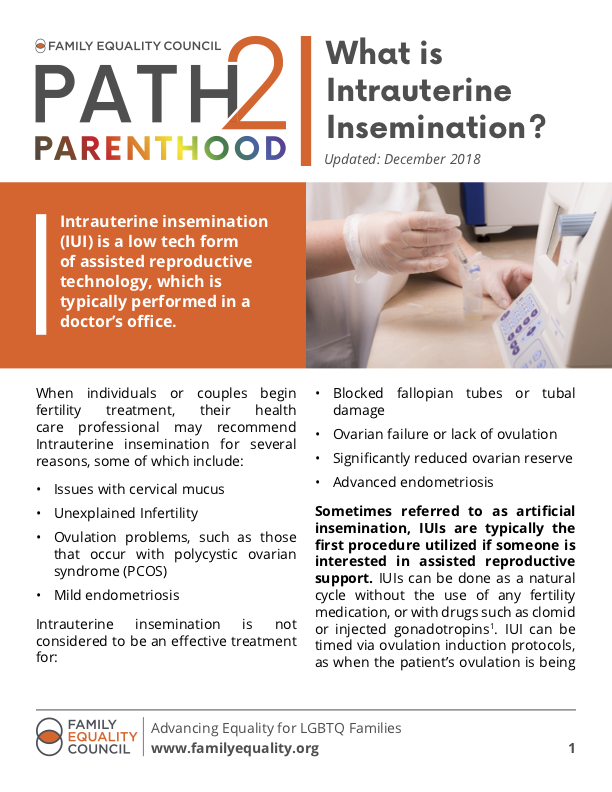Intrauterine insemination (IUI) is a low tech form of assisted reproductive technology, which is typically performed in a doctor’s office.
When individuals or couples begin fertility treatment, their health care professional may recommend Intrauterine insemination for several reasons, some of which include:
- Issues with cervical mucus
- Unexplained Infertility
- Ovulation problems, such as those that occur with polycystic ovarian syndrome (PCOS)
- Mild endometriosis
Intrauterine insemination is not considered to be an effective treatment for:
- Blocked fallopian tubes or tubal damage
- Ovarian failure or lack of ovulation
- Significantly reduced ovarian reserve
- Advanced endometriosis
Sometimes referred to as artificial insemination, IUIs are typically the first procedure utilized if someone is interested in assisted reproductive support. IUIs can be done as a natural cycle without the use of any fertility medication, or with drugs such as clomid or injected gonadotropins1. IUI can be timed via ovulation induction protocols, as when the patient’s ovulation is being monitored by a physician or, through the use of ovulation predictor kits that the patient utilizes at home2.
If you have been prescribed fertility medication in conjunction with IUI, your physician will monitor your ovarian follicle growth (length and number of follicles) through the use of ultrasound and blood tests. This will determine not only your readiness for the procedure itself, but will help to reduce the risk of hyperstimulation to the ovaries.
Prior to beginning treatment, it is important that you discuss the possibility of multiples with your physician. The multiple birth rate women experience through Intrauterine insemination is increased when infertility medications are used3.
To prepare for the procedure itself, a speculum will be inserted into the vagina and then a thin, flexible catheter, or tube, will be placed into the cervix. Washed sperm are then injected directly into the uterus with a syringe. The procedure is only mildly uncomfortable for most individuals and takes less than five minutes from start to finish.
Timing of the IUI procedure is important; a window of 6 hours on either side of ovulation is the norm. If an hCG shot has been administered to trigger ovulation, the IUI will take place around 36 hours after the injection has been administered.
Intrauterine inseminations are a relatively inexpensive treatment, when compared to In Vitro fertilization. However, it is important to discuss a realistic time plan for these procedures with your physician. Sometimes individuals get “stuck” attempting IUI month after month unsuccessfully. This can actually cost much more in the long run in terms of time, emotional energy, and money than moving on to other types of treatment. Of great importance here is the age of the patient, and the ticking of her biological clock.
Discuss how many IUIs it makes sense for you to have with your physician during your initial consultation. Three to four attempts utilizing gonadotropins is what most doctors recommend, prior to suggesting that you consider moving onto other options.
Endnotes
- Advanced Fertility Center of Chicago, 13 July 2010, http://www.advancedfertility.com/unexplai.htm
- The American Fertility Association Blog – IUI vrs. IVF: A Patient Guide, 13 July 2010, http://theafa.typepad.com/theafablog/2010/03/iui-vrs-ivf-a-patient-guide.html
- Tomlinson MJ, Amissah-Arthur JB et al. 11 July 2010. Human Reproduction 11:9, 1892-6, Prognostic indicators for intrauterine insemination (IUI): statistical model for IUI success.

